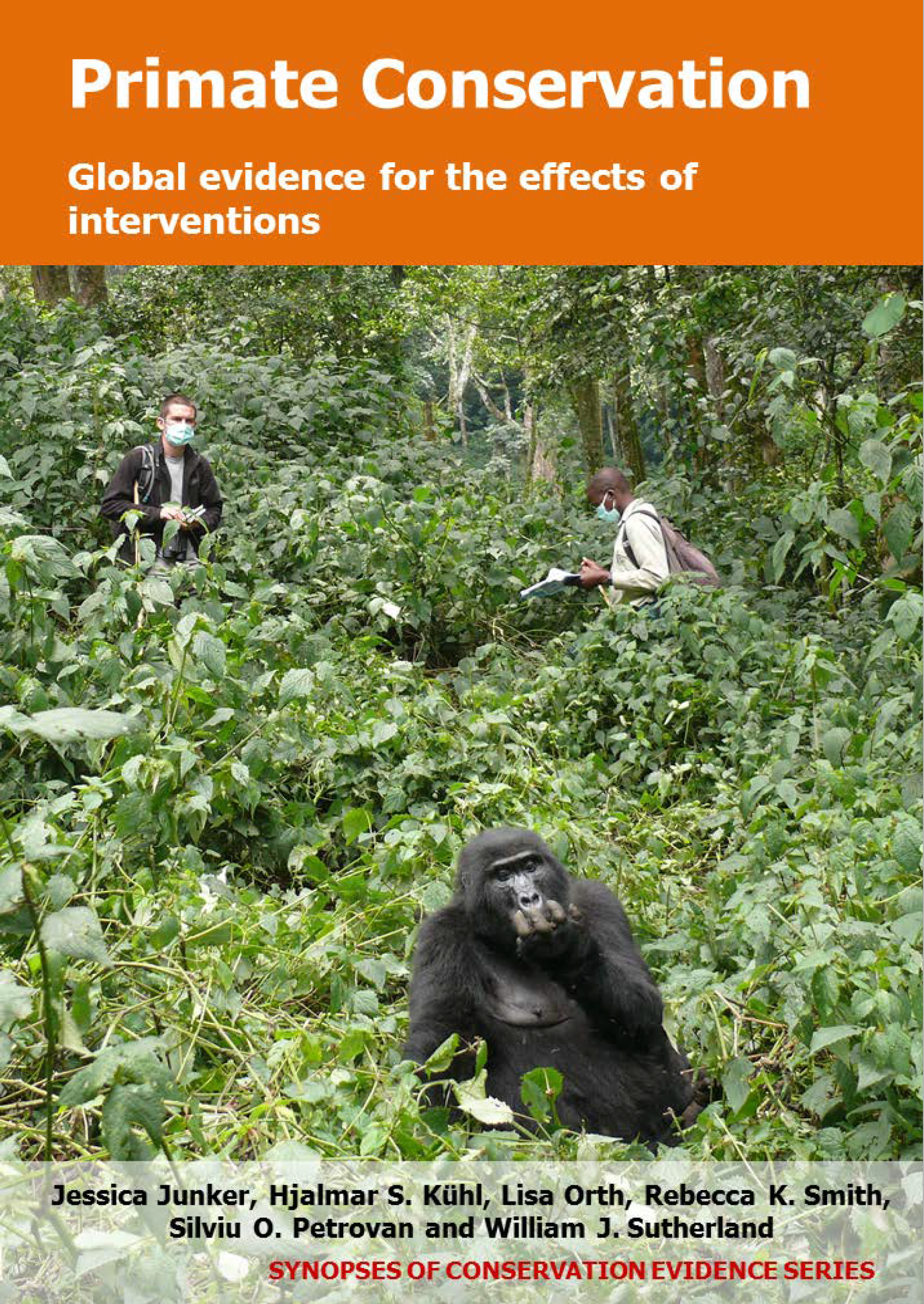Remove and relocate ‘problem’ animals
-
Overall effectiveness category Likely to be beneficial
-
Number of studies: 3
View assessment score
Hide assessment score
How is the evidence assessed?
-
Effectiveness
60% -
Certainty
50% -
Harms
10%
Study locations
Supporting evidence from individual studies
A replicated, before-and-after trial in 1995-2001 in temple orchards in urban Vrindaban, India (1) found that rhesus monkeys Macaca mulatta that were perceived as ‘problem’ animals by local residents and translocated along with other interventions, remained at their release sites for at least four years. The 600 monkeys that were translocated to eight different forest patches established resident populations, appeared healthy and showed no signs of stress. Also the time individuals from one of the translocated groups (150 individuals) spent engaged in different activities during the first three months after release was similar to activity budgets of wild groups in northern India. Authors reported that after the translocation, the residents of Vrindaban generally expressed their relief at the lessening of the ’monkey problem’. No quantitative results were provided in this study. Twelve groups (of 24–115 individuals) totalling 600 monkeys (45% of total population) were translocated to eight natural forest patches without resident monkeys in January 1997. Monkeys were monitored for a total of 300 hours by one person during the first four months and again for five days, four years after their release. The study does not distinguish between the effects of the different interventions mentioned above.
Study and other actions testedA controlled, before-and-after trial in 1973-2001 in savannah at the Laikipia Plateau, Kenya (2) found that crop-raiding olive baboons Papio anubis, regarded as ‘problem’ animals and translocated from farmland to natural habitat along with other interventions, survived the translocation, with most individuals surviving over 16 years. The survival rate of two translocated troops (total of 94 baboons) did not change significantly 16 years after the release (1984: 94 animals; 2001: 62 animals). Also, there was no difference in survival rate compared to a wild troop at the capture site and another resident troop at the release site (data reported as statistical model results). Both troops were released into habitat with resident baboons and predators. Prior to translocation, individuals underwent veterinary screens and some sick baboons were treated. A long-term research study was launched to study these animals. After release, baboons were temporarily provided with food during periods of drought in the first two years post-translocation but no other interventions took place after 1986. The study does not distinguish between the effects of the different interventions mentioned above.
Study and other actions testedA before-and-after, site comparison study in 1996-2006 in tropical forests of Lesio-Louna Wildlife Reserve, the Republic of Congo and Batéké Plateau National Park, Gabon (3) found that the majority of reintroduced western lowland gorillas Gorilla gorilla gorilla that became ’problem’ animals and were therefore recaptured and relocated along with 14 other interventions, survived for at least four years and some reproduced. Twenty-one of 25 gorillas (84%) released in the Congo and 22 of 26 gorillas (85%) released in Gabon survived for at least four years. Nine females gave birth to 11 infants, of which nine survived. In the Congo, five reintroduced ‘problem gorillas’ (solitary males) were recaptured after they moved outside of their home range to a more densely human populated area and were relocated back to avoid potential human-gorilla conflicts. Prior to release, gorillas underwent disease screening during quarantine and received preventative vaccinations. Gorillas were released in groups and prior to release were allowed to adapt to local environment and supplemented with food. Gorillas were released into habitat with no resident gorillas to re-establish populations and were treated for parasites and when sick. Dead gorillas were examined to determine their cause of death and to avoid disease transmission. Forty-three individuals were rehabilitated wild-born orphaned gorillas and eight gorillas were ex-situ captive-born animals. Both release sites were proclaimed protected areas before reintroduction. The study does not distinguish between the effects of the different interventions mentioned above.
Study and other actions tested
Where has this evidence come from?
List of journals searched by synopsis
All the journals searched for all synopses
This Action forms part of the Action Synopsis:
Primate Conservation
Primate Conservation - Published 2017
Primate Synopsis





)_2023.JPG)














